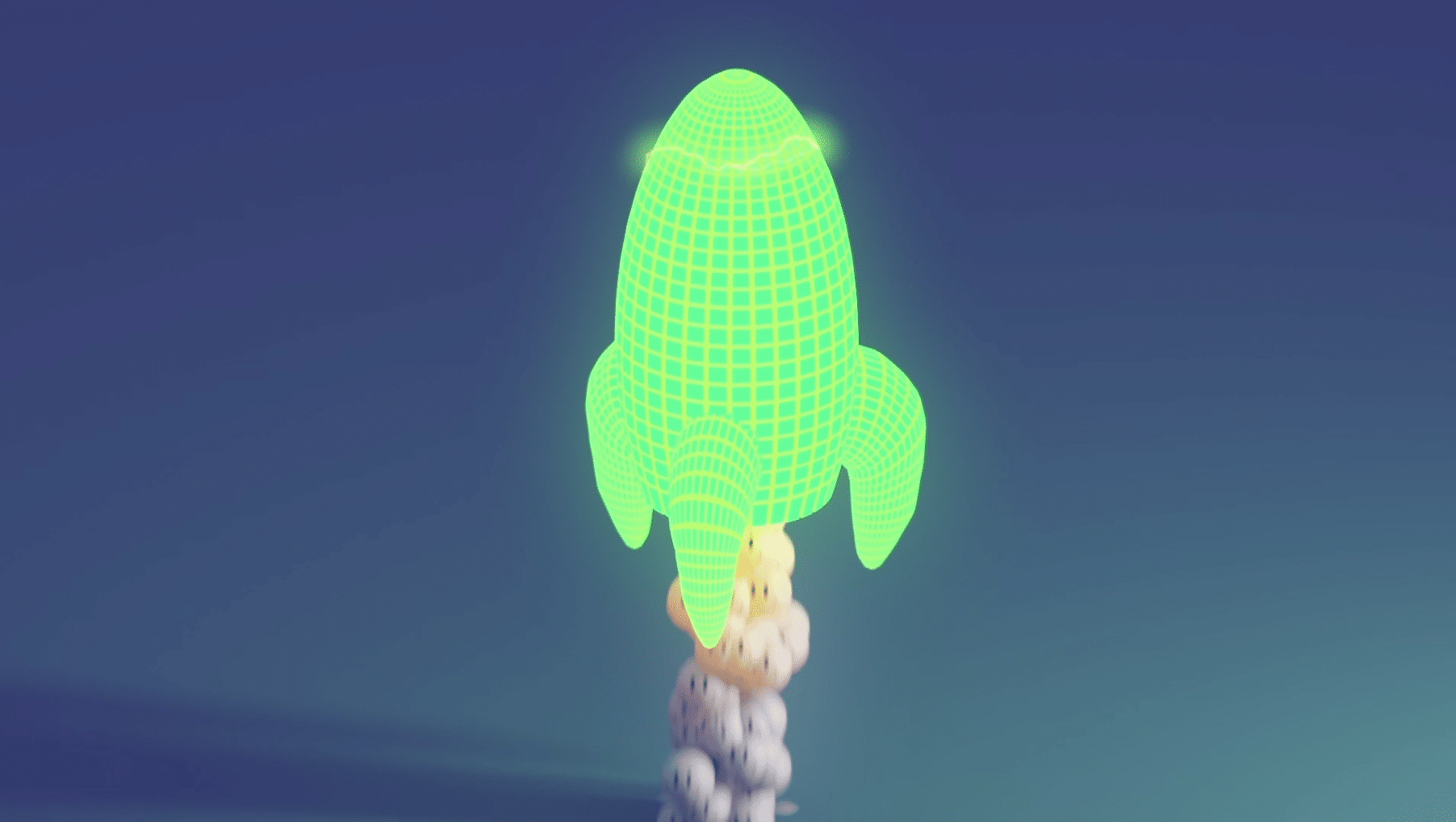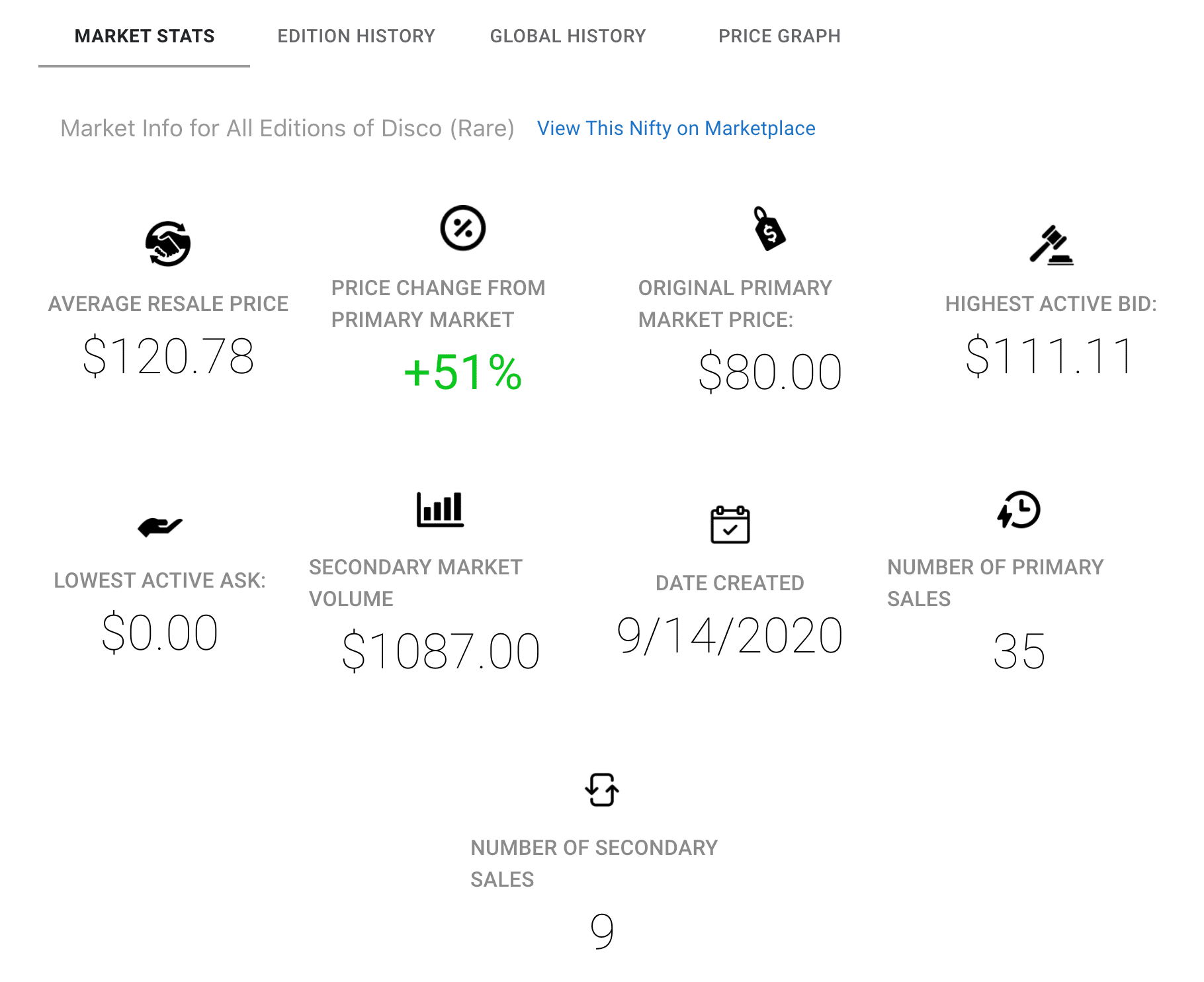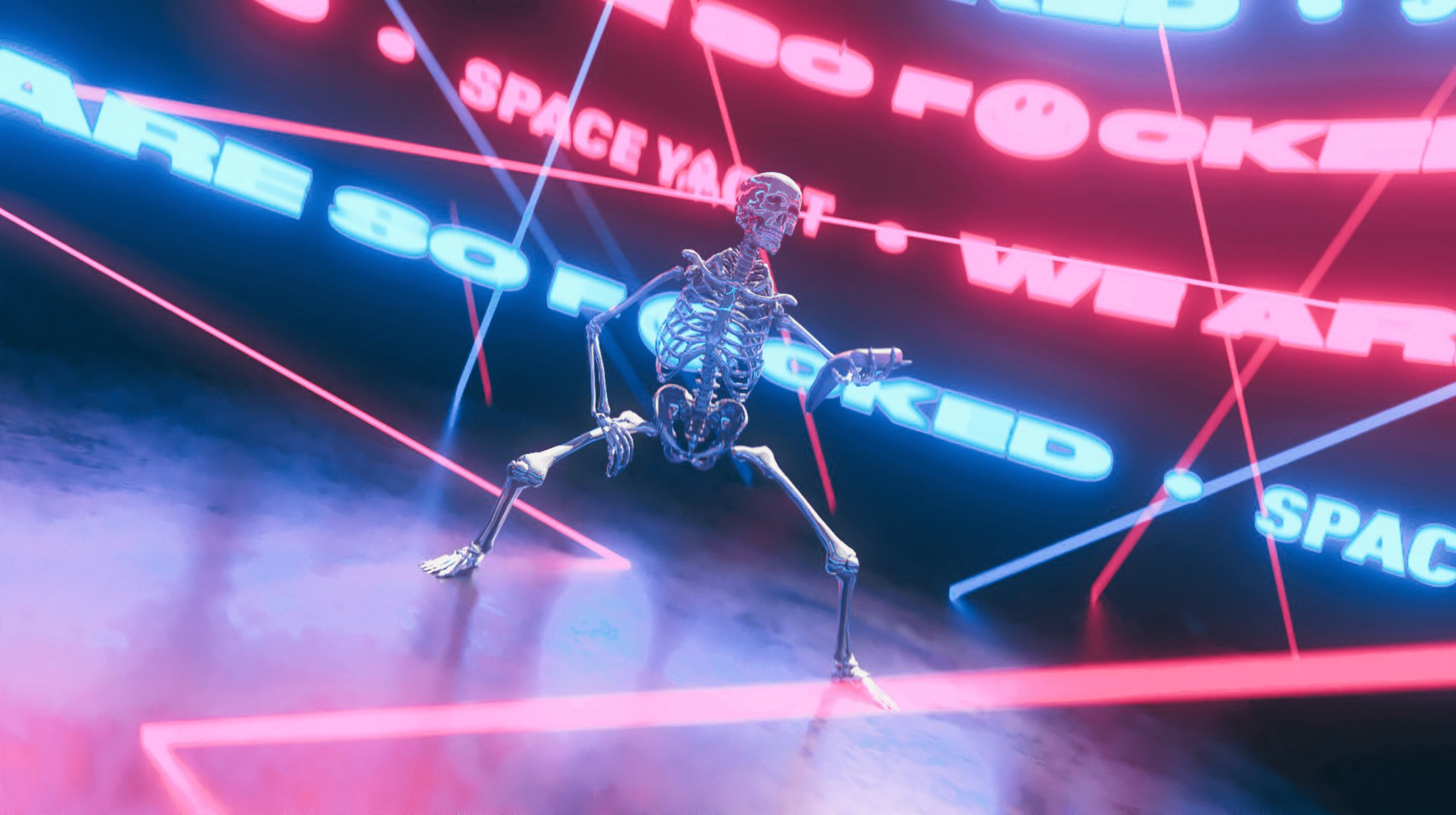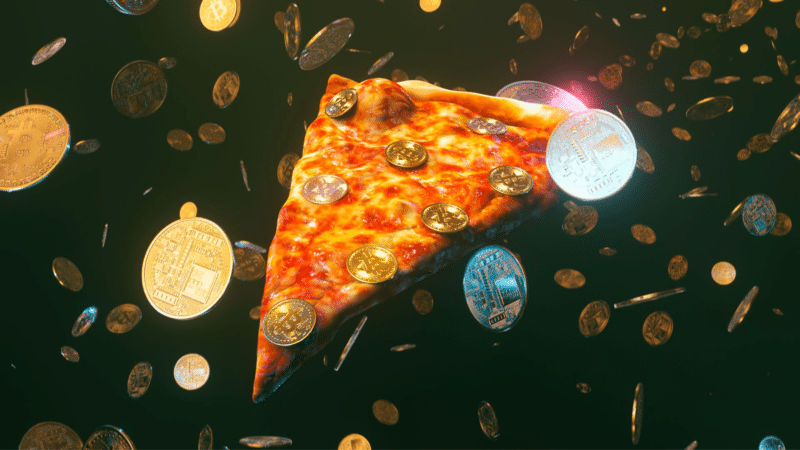Space Yacht started as a small music industry party in the back alley of a Los Angeles speakeasy in 2015, and has since become a heat-seeker for the next-up of dance music talent.
Before COVID kneecapped the industry, the tastemaking brand had been running weekly residencies and events internationally, throwing 150 shows per year. Its approach to events took the world by storm with surprise performers, forward-thinking bookings, and spontaneous pizza deliveries at the party’s peak.
When COVID halted Space Yacht’s traditional revenue streams, the party promoters set their sights on becoming a burgeoning digital empire–hosting live-streamed sets on Twitch, launching a new record label, and becoming the first EDM brand to enter the crypto-art space earlier this summer on Nifty Gateway, a digital art gallery for NFT and crypto-based art.
Editor’s note: to learn more about cryptocurrency art and Non-Fungible Tokens, check out our guides here:
- Non-Fungible Tokens (NFTs)
- How blockchain is changing art
- An exploration of the blockchain art market
Space Yacht’s first collection, a collaboration with renowned crypto-artist Goldweird, sold out in a matter of minutes and became a springboard for a whole new sector of creativity for the brand.

Space Yacht’s second NFT collection drops today, and consists of three distinct themes that have been at the core of the brand from its inception: pizza, smiley faces, and their trademarked motto “WE ARE SO F☺CKD.” Most people might not understand the connection, but If you’ve attended a Space Yacht event, you may have eaten a free slice of pizza on the dance floor at 1 a.m. handed to you by one of the founders – a tradition that takes place at every show. Or, if you have purchased a t-shirt or hoodie over the past few years, it probably has the WE ARE SO F☺CKD motto or Twerking skeleton somewhere on the garment.

We interviewed Space Yacht Co-Founder and crypto-art collector Rami Perlman about adapting their event series to succeed amid the shutdown of the nightlife industry, and what the future of crypto-art looks like in the electronic music space.
What is Space Yacht is best known for? How has it built up its reputation in the music space?
Space Yacht started five years ago as a weekly party in Hollywood on Tuesday nights. Originally, it was a hang for industry people and DJs. It quickly turned into the epicenter of underground dance music in LA. The value proposition was that you could come to our events and see new talent who was 18 months away from hitting the main stage. We built our reputation as curators who found talent before the labels and bigger event companies found them.
Over the years, we grew our footprint, moving to Sound Nightclub (one of the best clubs in LA) and setting up residencies across the country in places like Las Vegas, San Francisco, and San Diego. Over the last two years between touring, festivals and residencies we were averaging 150 events per year, and even did a tour in Asia before Covid hit. Off the back of our events business, we’ve been able to start a record label and create a thriving apparel business.
How did Space Yacht end up cryptocurrency art?
I studied visual art in college and have been a collector for years. I was introduced to the guys at Nifty Gateway through a friend and we immediately hit it off. I wasn’t aware of the NFT space until then, but instantly got hooked and started collecting. From there, I went down the rabbit hole of crypto and got equally hooked and excited about all of the possibilities, both from a financial perspective as well as how the blockchain could be relevant to the music industry.

The August drop was a collaboration with an established NFT artist named Goldweard, who creates a series of NFTs based on the Space Yacht Brand. Then, I composed all of the music for each animated piece, so it was cool to be able to talk about music in a largely visual medium.
When you launched your first crypto-art drop this past summer, did your fans understand the connection between the NFTs and your brand?
Education was a big part of why Nifty wanted to do the drop with us. We actually assumed that our fans didn’t know anything about NFTs, but our goal was to integrate our brand iconography, both from a visual and music perspective, and use that as an entryway to where we could talk about the tech behind NFTs.
Prior to the drop, we did a number of things to raise awareness, such as email blasts, blog posts, podcasts, and even featured the Nifty guys on our Twitch show to explain the technology. By the time the drop hit, our fans knew what it was and we actually saw a lot of sales from first-time buyers.
What makes cryptocurrency collectibles so valuable?
It’s all about authentication. We trust the authenticity of a physical piece of art when it’s signed or hand-numbered, or in some cases comes with a historical certificate that shows the history of who owned the piece and how much it sold for. I explain that an NFT takes the place of all of that, but in a sense, the blockchain does a better job of authenticating since it can’t be forged. People have been buying digital goods for a long time, whether it be in a video game or buying a song on iTunes. For digital natives, the world of NFTs is no different.

Do you see a place for NFTs in the music business landscape? Is it and how is it poised to disrupt existing record label models?
I don’t see NFTs as replacing the existing label models, but rather becoming a whole new lane where music artists can distribute and monetize their music. For decades, music lovers would collect vinyl or tapes or CDs, which are all basically unlimited copies of the original work. With NFTs, you can create a rare collectible and give music fans their first chance to actually OWN a piece of music just like owning a piece of art. NFTs take the concept of collecting music to an entirely new level!
Electronic music artists like 3lau and RAC have recently launched their own drops in the NFT space on platforms like Nifty Gateway & Super Rare. How do you see this trend evolving?
Covid has forced all of us to figure out new ways to monetize. It has especially decimated the dance music industry since most DJs make 95% of their revenue from touring. It makes a lot of sense to me that electronic music artists would be early to the space since tech is the framework through which we create music. I’ve already had managers, agents and artists hit me up asking about NFTs because they see the potential to monetize. I have a feeling we are about to see a major boom in this space.
As a collector yourself, what makes a great NFT?
It all starts with the quality of each piece. It’s not enough to just whip something up on photoshop and tell people to buy it. The artist needs to have a point of view that creates an emotional connection and entices people to want to buy or assign value to the piece.

Just like physical art, NFTs have to make you feel like “I NEED TO HAVE THIS!”
Can you tell us about the latest NFT drop?
We wanted to make this collection a shout out to the fans who have been with us since day one. Like our first drop, this second drop integrates our brand iconography into each piece, as well as original music. We’ve been using these same themes in a lot of our visuals and merchandise, so it seemed appropriate to make an entire NFT collection around these themes. For the new crypto-art collectors who have found out about us through our first NFT collection, this is a great introduction to the world and imagery of Space Yacht.







